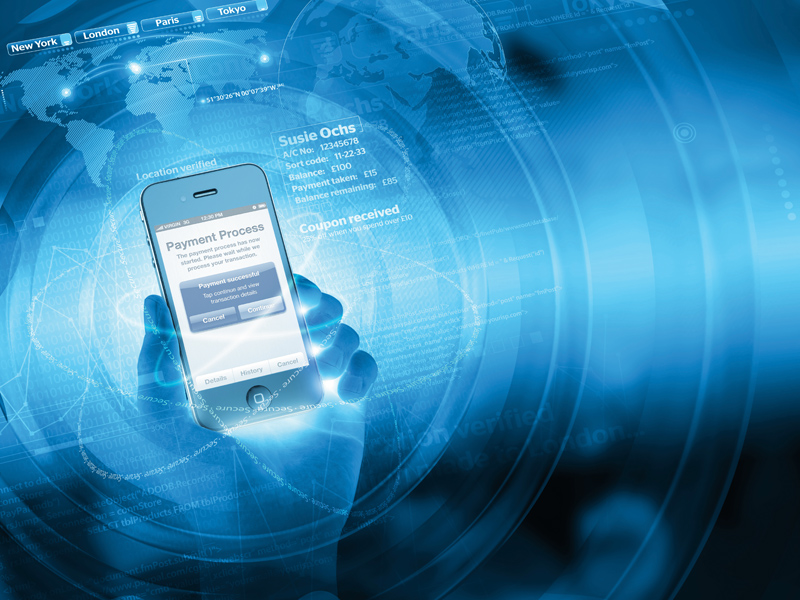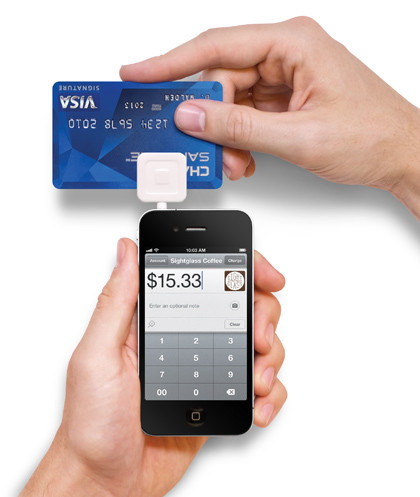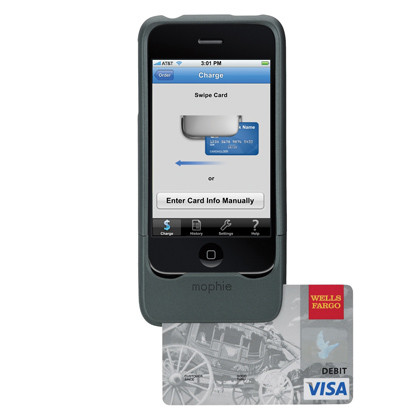How to pay with your iPhone
Your mobile is making the cash in your pocket obsolete

Your mobile phone started out as just that, a phone. Then it was a phone and a crummy camera and Tetris player in one. As phones got more advanced - smarter, if you will - they've evolved to take over more and more functions that used to require their own devices.
An iPhone can be an ereader, video camera, GPS navigation system, music player, games console… even a level to help you hang pictures straight. But has it ever bought you lunch?
New technologies, apps and add-ons let smartphones both receive and make payments, and the next generation of phones in the coming years will go further than ever to letting your mobile replace your wallet.
Taking cards on iPhone

Cash transactions are getting rarer with debit and credit cards being accepted nearly anywhere, but you still run into places that stubbornly remain cash-only, whether it's a lunch wagon, a little independent café, or even an artist selling paintings at a market.
Lately, several solutions have popped up for small businesses - or anyone, really - to accept card payments by attaching a card reader to their iPhone, iPod touch or iPad, or other smartphone.
Square, one of the most recognisable, is a small, square dongle that plugs into the headphone jack on an iOS or Android device, and lets the merchant swipe a customer's magnetic stripe card, converting their account data to an audio signal.
The corresponding app software encrypts it and sends it to Square's servers, which communicate with the card-processing companies to complete a transaction. The customer signs their name with a dash of their finger on the touchscreen, and they're able to have a receipt sent to them over email or SMS text message.
Get daily insight, inspiration and deals in your inbox
Sign up for breaking news, reviews, opinion, top tech deals, and more.
The main advantage to using the headphone jack rather than the iPhone's 30-pin dock connector is that the dock connector is only on iOS devices, while every mobile has a headphone jack. This meant Square could roll out its system to Android by simply writing compatible software.
Using the dock connector is also more expensive, manufacturing-wise, and would require Square to get a licence from Apple, undergoing a pretty rigorous testing and certification process. Plus, now merchants can use a battery case with their devices or keep them plugged into power.
But you won't see Square - or its many competitors, including the GoPayment, Intuit Credit Card Reader, Mophie Marketplace, VeriFone's PAYware Mobile, the MagTek iDynamo and others - in use at your local pub, since the UK, as well as all of Europe and most of Asia, has moved to using Chip and PIN.
Chip and PIN (also called EMV for Europay, MasterCard, Visa) is more secure, since magnetic stripes are more easily read and cloned by black-market devices, and signatures can be forged. The chips in these cards are much more difficult to clone, and even if a card is lost or stolen, it can't be used without the matching PIN. It's been standard in the UK since 2004, but it isn't widespread in the USA, with both banks and merchants reluctant to invest in the new hardware required.

But one iPhone-based card reader does support Chip and PIN transactions: the iZettle, a free EMV chip card reader with accompanying app that connects to an iPhone or iPad's 30-pin dock connector.
New company Card.io is even offering mobile developers a new way to accept card payments within their apps without needing a scanner at all. Users take a photo of their card and the account number is read and captured by the software.
An SDK is available for Android and iOS developers to add it to their apps, and Card.io gets a small fee for each transaction.